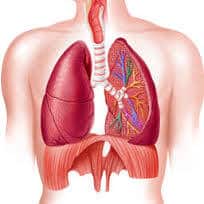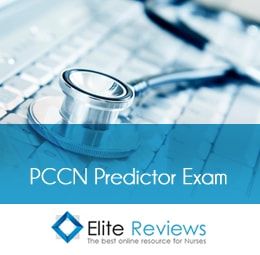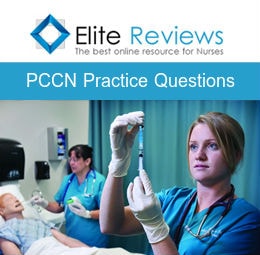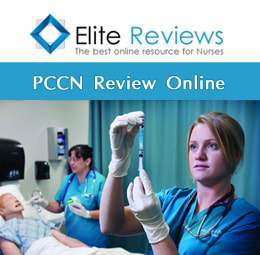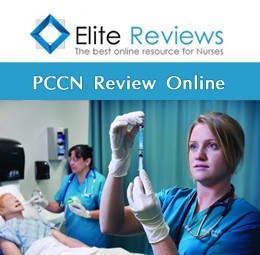PCCN Pulmonary Exam Overview
PCCN Pulmonary Exam Overview
Pathophysiology
The Pulmonary AKA Respiratory system is a biological system consisting of specific organs and structures used for the process of respiration in an organism. The respiratory system is involved in the intake and exchange of oxygen and carbon dioxide between an organism and the environment.
Parts of the Respiratory System
As we breathe, oxygen enters the nose or mouth and passes the sinuses, which are hollow spaces in the skull. Sinuses help regulates the temperature and humidity of the air we breathe.
The trachea, also called the windpipe, filters the air that is inhaled, according to the American Lung Association. It branches into the bronchi, which are two tubes that carry air into each lung. The bronchial tubes are lined with tiny hairs called cilia. Cilia move back and forth, carrying mucus up and out. Mucus, a sticky fluid, collects dust, germs and other matter that has invaded the lungs. We expel mucus when we sneeze, cough, spit, or swallow.
The bronchial tubes lead to the lobes of the lungs. The right lung has three lobes; the left lung has two. The left lung is smaller to allow room for the heart. Lobes are filled with small, spongy sacs called alveoli, and this is where the exchange of oxygen and carbon dioxide occurs.
The alveolar walls are extremely thin. These walls are composed of a single layer of tissues called epithelial cells and tiny blood vessels called pulmonary capillaries.
Blood passes through the capillaries. The pulmonary artery carries blood containing carbon dioxide to the air sacs, where the gas moves from the blood to the air. Oxygenated blood goes to the heart through the pulmonary vein, and the heart pumps it throughout the body.
The diaphragm, a dome shaped muscle at the bottom of the lungs, controls breathing and separates the chest cavity from the abdominal cavity. When a breath is taken, it flattens out and pulls forward, making more space for the lungs. During exhalation, the diaphragm expands and forces air out.
Structures of the Pulmonary System
- Airways
- Blood vessels
- Chest wall
- Lungs
- Lobes
- Segments
- Lobules
- Conducting Airways
- Upper Airways
- Nasopharynx
- Oropharynx
- Larynx
- Connects upper and lower airwars
- Lower airways
- Trachea
- Bronchi
- Terminal bronchioles
- Upper Airways
Pulmonary and Bronchial Circulation
- Pulmonary circulation has a lower pressure than the systemic circulation
- One third of pulmonary vessels are filled with blood at any given time
- Pulmonary artery divides and enters the lung at the hilus
- Each bronchus and bronchiole has an accompanying artery or arteriole
Chest Wall and Pleura
-
Chest Wall
- Skin, ribs and intercostal muscles
- Thoracic cavity
- Pleura
- Serous membrane
- Parietal and visceral layers
- Pleural space
- Pleural fluid
Gas Transport
Four Steps
- Ventilation of the lungs
- Diffusion of oxygen from the alveoli into the capillary blood
- Perfusion of systemic capillaries with oxygenated blood
- Diffusion of oxygen from systemic capillaries into the cells
Tests of Pulmonary Function
- Spirometry
- Diffusion capacity
- Residual volume
- Functional residual capacity
- Total lung capacity
- Arterial blood gas analysis
- Chest radiographs
PCCN National Exam Courses
Overview
- Elite Reviews Offers A Variety Of Online Courses That Will More Than Adequately Help Prepare The Critical Care Nurse To Pass The National Exam.
- Each Course Includes Continuing Education Credit and Sample Questions.
Continuing Education
- Each Of Our Online Courses Has Been Approved Continuing Education Contact Hours by the California Board of Nursing
- Login To Your Account In Order To Access The Course Completion Certificate Once The Course Is Complete.
PCCN Free Trial
- FREE Sample Lecture & Practice Questions
- Available For 24 Hrs After Registration
- Click The Free Trial Link To Get Started – PCCN Free Trial
How It Works
How The Course Works
- First – Purchase The Course By Clicking On The Blue Add To Cart Button – You Will Then Be Prompted To Create A User Account.
- Second – After Creating An Account, All 3 Options (90, 120 or 150 Days) Will Be Listed. Select The Option You Desire And Delete The Other Two.
- Third – You Will Be Prompted To Pay For The Review Using PayPal – After Payment You Will Be Redirected Back To Your Account.
- Last – Click The Start Button Located Within Your Account To Begin The Program
- 125 Prep Questions
- Q & A With Rationales
- Approved For 5 CEU’s
- 90 Days Availability
- Cost $75.00
- 1250+ Prep Questions
- Q & A With Rationales
- Approved For 25 CEU’s
- 90 Days Availability
- Cost $200.00
PCCN Practice Questions Bundle
- 1350+ Prep Questions
- Q & A With Rationales
- Approved For 30 CEU’s
- 90 Days Availability
- Cost $225.00
PCCN Review Course
- Option 1
- Lectures & 1250+ Questions
- Q & A With Rationales
- Approved For 35 CEU’s
- 90 Days Availability
- Cost $275.00
- Option 2
- Lectures & 2000+ Questions
- Q & A With Rationales
- Approved For 40 CEU’s
- 90 Days Availability
- Cost $325.00
PCCN Review Course Bundle
- Option 3
- Lectures & 3000+ Questions
- Q & A With Rationales
- Approved For 70 CEU’s
- 90 Days Availability
- Cost $375.00

